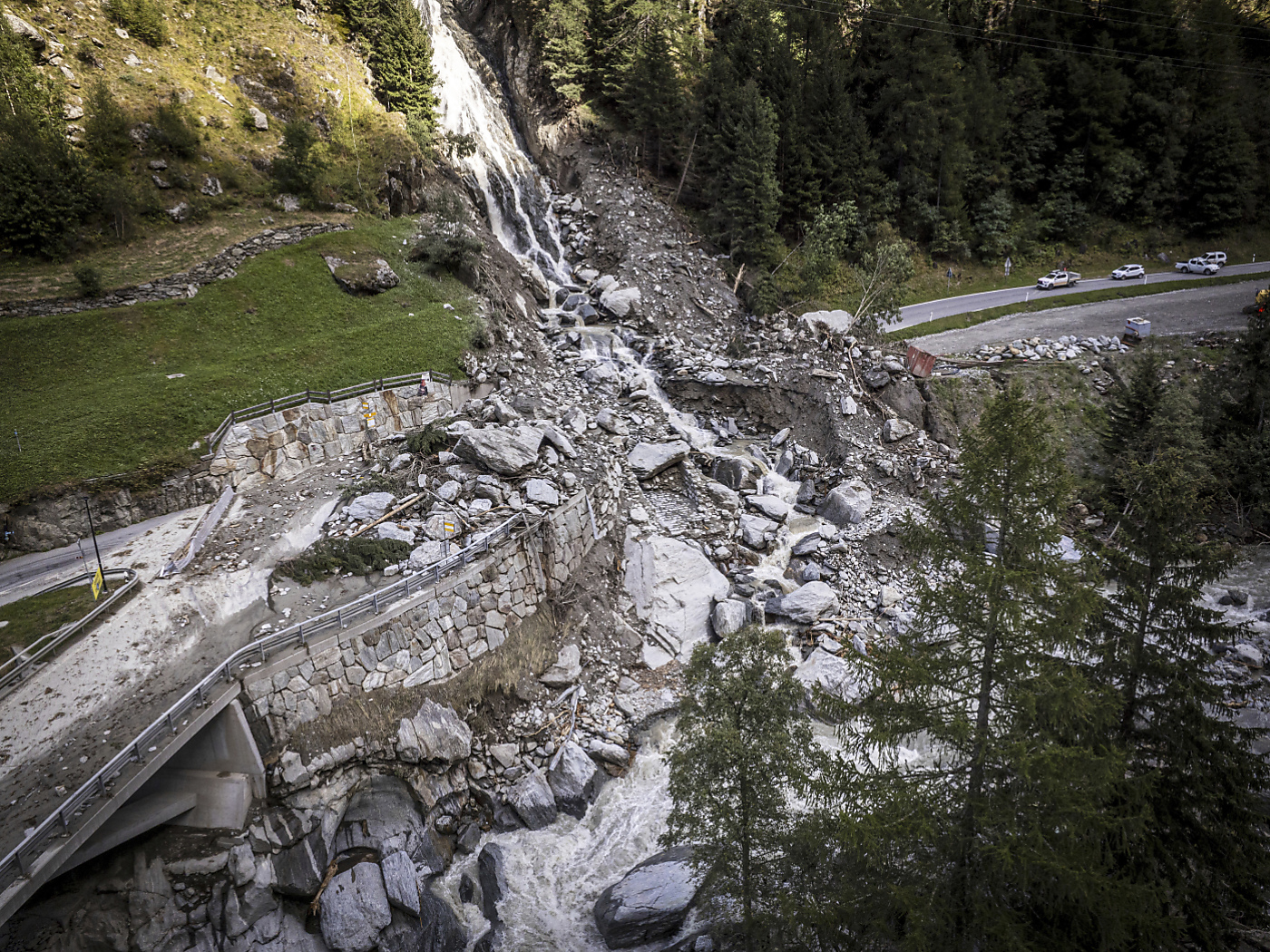
Storm-damaged road reopens in Saas Valley in southern Switzerland

The Saas Valley in canton Valais is once again fully accessible. The main road into the valley had been closed for six days due to a landslide caused by storms and heavy rain.
+ Get the most important news from Switzerland in your inbox
The road to the mountain resort of Saas Fee was reopened at around 10am on Wednesday, Stefan Luggen from the Valais Mobility Office told the Keystone-SDA news agency.
Representatives from Saas Valley Tourism visited the site of the landslide on Wednesday to thank the workers and “all those who actively worked to clear the road”, the organisation said in a press statement.
+ Saas Valley in southern Switzerland remains isolated after landslide
The road between Eisten and Saas-Balen was interrupted after a landslide on September 5. Around 2,200 people, mainly Swiss tourists, were stranded in the valley after the storms.
Several thousand tonnes of rock had crashed down the mountain, the cantonal engineer in charge, Vincent Pellissier, explained on Monday. Before the workers could start building a temporary road, explosives had to be used to clear huge rocks that had tumbled down the mountain. The largest rocks had a volume of 100 cubic metres, or weighed around 270 tonnes.
+ How Switzerland is trying to defeat extreme weather events
The road reopening on Wednesday is still temporary, however. The canton is still seeking a definitive solution for the bridge over the Mattwaldbach stream, said Luggen. According to Pellissier, it should be completed in ten months at the latest and run a little further away from the rock face in order to avoid a similar situation in the future.
Helicopters were used to evacuate some people from the valley. Since Friday, 1,200-1,300 people were able to leave the valley by helicopter, according to Simon Bumann, spokesperson for the regional command staff. In addition, material and food could be delivered to the cut-off villages.
Adapted from French by DeepL/sb
This news story has been written and carefully fact-checked by an external editorial team. At SWI swissinfo.ch we select the most relevant news for an international audience and use automatic translation tools such as DeepL to translate it into English. Providing you with automatically translated news gives us the time to write more in-depth articles.
If you want to know more about how we work, have a look here, if you want to learn more about how we use technology, click here, and if you have feedback on this news story please write to english@swissinfo.ch.

In compliance with the JTI standards
More: SWI swissinfo.ch certified by the Journalism Trust Initiative






























You can find an overview of ongoing debates with our journalists here . Please join us!
If you want to start a conversation about a topic raised in this article or want to report factual errors, email us at english@swissinfo.ch.